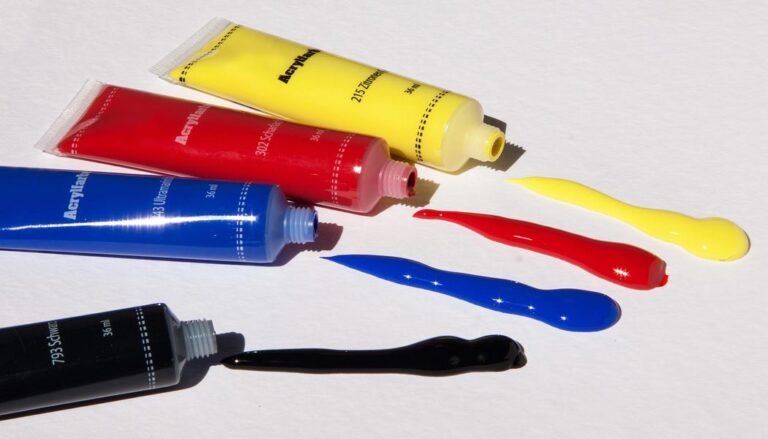
Does Water Destroy Acrylic Paint? – Find Out Here!
Acrylic paint is water-based, so it can handle contact with water to some extent. In normal cases, water will not damage acrylic paint. But excessive use can dilute it and impact its texture and bonding.

Does Water Destroy Acrylic Paint?
Acrylic paint and water share a symbiotic relationship as they embark on a creative journey across the canvas. Imagine that when we introduce a touch of water to acrylics, it is akin to a heartfelt handshake. And that is a sign of solidarity. It is also an agreement to cooperate seamlessly.
Water acts as the choreographer, guiding the paint’s graceful movements. It encourages it to flow like a river and blend harmoniously, much like the elegant mixing of colors on an artist’s palette. Yet, we must tread carefully, for too much water is similar to inviting a wild partygoer to our art exhibition. The paint loses its grip on the canvas, leaving us with a messy and unruly masterpiece. That is far from our creative intentions.
Mastering the art of using water with acrylics is a delicate dance – a quest to discover that elusive equilibrium. It is about finding the sweet spot, like a perfectly choreographed ballet. In this balance, neither excess nor scarcity plays a part. This allows the artist to achieve the desired fluidity and control in their work.
So, fellow artists, let us waltz through our creative endeavors. Together, we can ensure that the water-acrylic partnership remains in harmonious balance, allowing us to create art that is just right!
Are Acrylic Paints Washable with Water?
Yes, acrylic paints are water-soluble to some extent. It means you can clean them up with water. It is better while they are still wet. This characteristic makes acrylics beginner-friendly and suitable for a variety of art projects.
While the paint is wet, a damp cloth or sponge can effortlessly remove accidental spills or errors. This water-solubility also facilitates blending and layering techniques. Because water can be used to thin the paint, producing translucent effects or seamless color transitions on your canvas.
Also, it is crucial to note that once acrylic paint dries, its water solubility decreases significantly. Once the paint has dried, it forms a water-resistant and flexible film on the surface. This makes it somewhat challenging to remove with water alone. So, for efficient cleanup, always attend to spills. Or you can clean your brushes promptly while the paint is still wet.
Can You Keep Acrylic Paint Wet?
Yes, you can keep acrylic paint wet for an extended period if you use various techniques and products designed for this purpose. There are acrylic retarders and blending mediums available in art stores that can be mixed with your acrylic paint. These additives slow down the drying process. This allows you more time to work with your colors on the canvas.
When you keep acrylic paint wet, it grants you greater control over blending, shading, and creating complex details in your artwork. However, it’s important to keep in mind that the extended drying time can also make the paint more prone to smudging.
Additionally, accidental mixing of colors can occur if you are not careful. So, while keeping acrylic paint wet can be a valuable tool for artists, it is essential to experiment and practice. This way, you can find the right balance between workability and maintaining the integrity of your painting.
Does Water Destroy Acrylic Paint on Canvas?
Water itself does not typically destroy acrylic paint on canvas. But excessive exposure to water can cause issues. When acrylic paint gets wet, it can rehydrate and become workable. This can be a useful technique for blending or correcting mistakes when the paint is still wet.
Once acrylic paint dries, it forms a stable film on the canvas. However, soaking it in water or exposing it to prolonged moisture can soften the paint film. This can result in adhesion loss and possible peeling.
To avoid this, apply varnish once your acrylic paintings are completely dry. Varnish adds a protective layer that shields the paint from moisture, dust, and other risks. So, while water can be useful for acrylic artists, use it cautiously. Especially when it is being used with dried acrylic artworks.
Final Words
On our canvas stage, the artists dance as star-crossed lovers. Water, the mischievous matchmaker, adds drama to our romantic masterpiece. But afraid not, dear artists, love prevails, even amidst watery antics. Embrace this artistic journey with humor, creating an epic love story that would make the paint blush!
